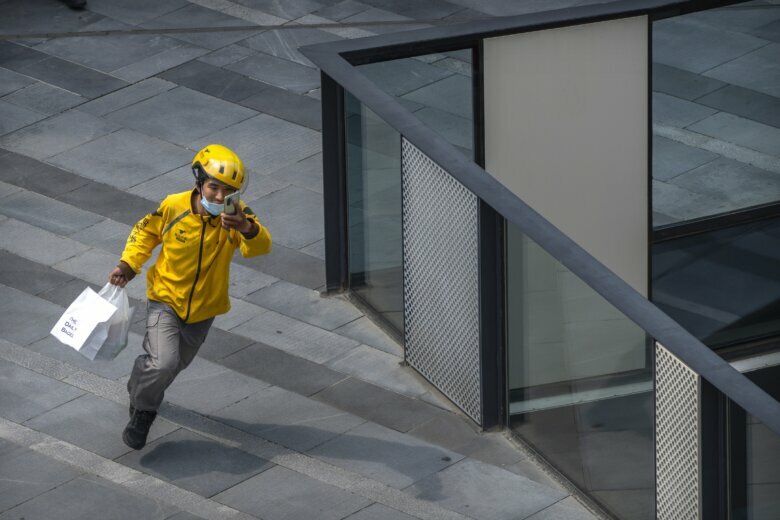
A man who completed 21 days of mandatory quarantine upon returning to China from overseas has been identified as the likely source of a new outbreak, raising questions over the sustainability of the country’s stringent zero-Covid strategy.
The fresh outbreak in Fujian province on China’s southeastern coast has infected more than 60 people, including 15 elementary school pupils. It emerged just two weeks after China contained its worst coronavirus flareup in more than a year, highlighting the increasing challenge posed by the highly contagious Delta variant — even to a country with some of the world’s strictest, most far-reaching containment measures.
The latest infections were first detected in two young brothers during a routine Covid test at a elementary school in Xianyou county, Putian city, on Thursday. Another student and three parents tested positive the next day, the Putian municipal government said at a press conference Friday.
Experts advising the government have pointed to one of the parents — a father who recently returned from Singapore — as the likely source of the outbreak, despite the man having completed a lengthy quarantine on arrival in China.
The man arrived in Xiamen, a major coastal hub in Fujian, on August 4, where he underwent 14 days of compulsory hotel quarantine. He spent another 7 days in centralized quarantine at a designated location in Xianyou, before returning home for a further week of health monitoring, according to the Putian government.
He had tested negative for the virus nine times during 21 days of quarantine, before testing positive on Friday — 37 days after entering China, according to state media.
China’s border restrictions and mandatory quarantine requirements for overseas arrivals are among the strictest in the world. Since containing the initial outbreak in Wuhan, the Chinese government has blamed every local flareup on transmission from abroad — either through travelers or imported goods.
Chinese authorities did not reveal when, where or how the man caught the virus, but an incubation period longer than 21 days is highly unusual.
Researchers at the Guangdong Provincial Center for Disease Control and Prevention found that the Delta variant has an average incubation period of 4 days, compared with an average of 6 days for the original strain.
Some have questioned on social media if the man picked up the virus after he returned to Xianyou.
As of Sunday afternoon, Putian had reported 32 confirmed cases and 32 asymptomatic infections, according to the Putian government. China keeps a separate count of symptomatic and asymptomatic cases and does not include asymptomatic carriers of the virus in the official tally of confirmed cases.
Infections have also spread to other cities in the province. On Monday, China’s National Health Commission said 6 locally transmitted cases were reported in Quanzhou, and another in Xiamen.
The cases came on the heels of another Delta-driven outbreak, which spread to more than half of China’s provinces and infected over 1,200 people after emerging in late July in the eastern province of Jiangsu. The surging cases were seen as the biggest challenge yet to China’s uncompromising zero tolerance policy on Covid-19.
Local authorities responded by placing tens of millions of residents under strict lockdown, rolling out massive testing and tracing campaigns and restricting domestic travel. By late August, health officials announced that the outbreak had been “effectively brought under control.”
While the zero-Covid strategy appeared to have worked, experts say it took longer for Chinese authorities to bring infection back to zero compared with previous flareups.
Yanzhong Huang, a senior fellow for global health at the Council on Foreign Relations, said the strategy is facing a problem of diminishing returns when dealing with the highly transmissible Delta variant.
“It’ll become more and more difficult to sustain that approach, in terms of the time, the organizational energy, and the financial and economic pains it takes to reset cases to zero,” he said. “No matter how stringent the travel restrictions are, you’ll continue to have cases imported and triggering outbreaks in the country.”
Countries like Australia and Singapore are already shifting to a new approach of learning to live with the virus, after relying on the zero-Covid strategy to keep it at bay for much of the past year. In Australia, the public has grown increasingly resentful of strict lockdown measures, with anti-lockdown protests breaking out in the country’s largest cities despite surging cases last month.
China, however, has doubled down on its stringent containment efforts, which have been hailed by the ruling Communist Party as proof of the supposed superiority of its authoritarian political system.
In Putian, authorities ordered its 2.9 million residents not to leave the city unless absolutely necessary. Those with legitimate reasons to leave must produce a negative coronavirus test taken within the past 48 hours. Cinemas, gyms, bars and libraries were shut, while kindergartens, primary schools and high schools were closed and ordered to conduct classes online.
In Xianyou, public transport and taxi services were suspended, as were buses and trains leaving the county.
In China, such restrictive measures remain broadly popular among the public, partly because they are only applied to a small section of the country’s 1.4 billion population each time, with the majority of people enjoying the benefits associated with covid-free living, rather than the inconvenience of protracted lockdowns.
“This is natural. When you’re not the victims of the lockdown, you are going to support any measure that makes you safe. Even if you’re subject to a lockdown, you might still find it tolerable because it only happens so rarely,” said Huang, the global health fellow.
But he warned that public support and tolerance might wear off if the pandemic drags on.
“(The Chinese authorities) will be constantly imposing new lockdown measures. I think eventually, the public support will be undermined,” he said.








